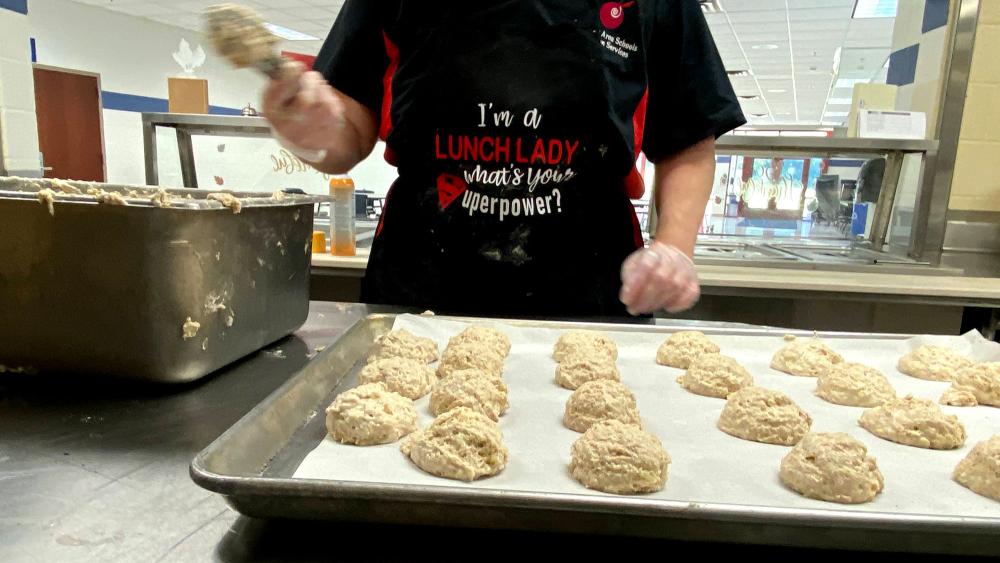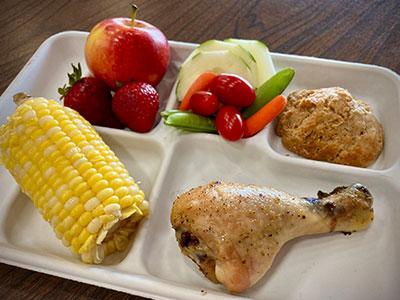
75 Years of Improving and Expanding School Lunches to Keep Kids Fed
What first comes to mind when you hear “school lunch?” Perhaps it’s homemade rolls or square pizza. Maybe it’s even foods that you tried for the first time at school.
October 11-18, is National School Lunch Week. 75 years ago, the National School Lunch Act was signed by President Harry Truman. Even though school food service began long before 1946, this act established the National School Lunch Program (NSLP). Since then, the NSLP has gone through a lot of changes, including the Child Nutrition Act of 1966 which added more subsidies for low-income children, as well as school milk and school breakfast programs, and the 2010 Healthy Hunger-Free Kids Act, which increased student access to federal nutrition programs and updated nutrition standards for school meals and snacks.
Farm-to-School Programs
One creative way school lunches have changed over the years is through farm to school programs that connect students with meals made from locally grown foods. Farm to school programming is a win-win-win for the communities, schools and farmers involved, making a partnership like this an easy choice. For every $1 spent on local foods, $2.16 of economic activity is generated within the local economy.
I had the opportunity to talk to Maria Anderson, Nutrition Services Coordinator for Roseville Area Schools, about their lunch programming. The school district was recently awarded a USDA Farm to School grant to support their highly successful farm-to-school program.

They currently have “Minnesota Thursdays” twice a month, an entirely locally-sourced menu day. Roseville primarily works with another Second Harvest Heartland partner, The Good Acre, to source their local produce. They also make sure that their proteins come from local farms that support good animal husbandry practices and are also featuring a plant-forward option made with local beans.
Farm to school is an opportunity to impact the local food ecosystem by leveraging direct purchasing, especially from BIPOC and emerging farmers. One example of this is Roseville Area Schools purchasing wild rice from Red Lake Nation, the only American Indian tribe in the U.S. that grows and harvests their own wild rice on local lands. Students are also given the opportunity to try new foods throughout the year like purple potatoes, watermelon radishes and countless varieties of apples.
Maria also noted that Minnesota Thursdays have increased meal participation on those days by 9 percent. Both kids and families are excited about the high-quality food school districts like Roseville can provide. “We’re producing restaurant-quality food,” said Maria. “We are really working hard to put out good food for our students despite all the challenges we’ve faced.”
What’s Next for School Meals
Since March 2020, school districts have been able to serve free meals to all students 18 and under through waivers from the USDA. The normally strict requirements were loosened because of the ongoing pandemic and have allowed all students easier access to meals, regardless of their family’s income. Free meals for all students have also reduced the stigma around school meals and reinforces that school meals are a part of the public education system. It’s been proven that school meals reduce food insecurity, obesity rates and poor health, which in turn saves our system money.
School meals play an important role in the hunger relief system. These programs are backed by federal dollars and do so much for communities by not only providing employment opportunities, but also allowing for local purchasing, and increasing a school district’s revenue all while providing nutritious meals to students. Prior to the pandemic, nearly 4.9 billion school lunches were served nationwide. Imagine what those numbers would be like if meals continue to be provided at no cost to students and families! By leveraging school lunch programs and breaking down barriers, we’re able to put a small dent in the overall child hunger landscape.
The possibilities for school lunch program innovations and improvements are limitless and, on the Child Hunger team, we’ve seen firsthand what our partners can accomplish, even during abnormal years!
